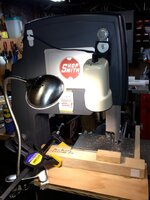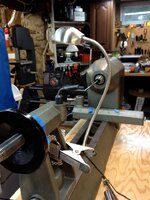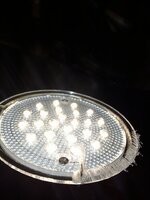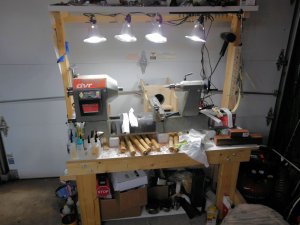I just happened on these brushed nickel clamp-on LED lamps in Lowes. They run $17-20. Because Lowes' website is poorly organized, I can't give you a link. Sorry. Showed them to people in my woodturning club. After that, the club bought one for each of our lathes, and a lot of the guys bought multiples for their own shops. They give great light, and are VERY durable. Note the picture of the one that I had mounted, insecurely, on my band saw. In the middle of sawing, it came off and chattered along the blade until the saw dug further into it. Like a Timex watch, it "took a licking and kept on ticking!" Still works fine. Now I put a couple of pieces of anti-slide under-carpet material between the jaws to help get a better grab. The lights really are great. Russ




